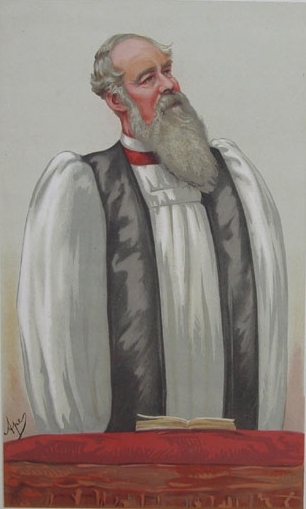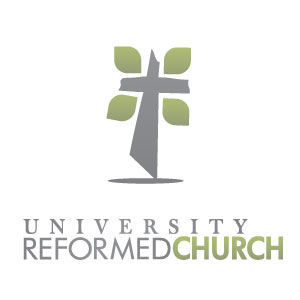Kevin DeYoung's Blog, page 29
January 22, 2017
Monday Morning Humor
January 17, 2017
9 Myths about Abortion Rights and Roe v. Wade
 Forty-three years ago, the Supreme Court concluded that a woman’s constitutional right to privacy included a right to terminate her pregnancy. After the sweeping decision was handed down, not only were the abortion laws of all fifty states rendered null and void, it was clear that no legal prohibition against abortion before viability would stand. And it would soon become clear that prohibitions after viability were unenforceable. Abortion on demand would be the law of the land.
Forty-three years ago, the Supreme Court concluded that a woman’s constitutional right to privacy included a right to terminate her pregnancy. After the sweeping decision was handed down, not only were the abortion laws of all fifty states rendered null and void, it was clear that no legal prohibition against abortion before viability would stand. And it would soon become clear that prohibitions after viability were unenforceable. Abortion on demand would be the law of the land.
The moral and spiritual dimensions notwithstanding, there are a plenty of reasons to see Roe as a logical, legal, and political debacle. In his book, Abuse of Discretion: The Inside Story of Roe v. Wade, Clarke Forsythe highlights a number of myths which led to the ruling in Roe–myths which, unfortunately, continue to be believed today.
Myth #1: Abortion was a common and widely accepted practice throughout history.
Truth: This inaccurate claim was repeated throughout the 1960s. The fact is that abortion was rare well into the nineteenth century. Almost all abortion methods before then were ineffective or potentially dangerous to the mother. True, unwanted children were still terminated, but this was done by killing newly born children. If abortion is to be considered a common practice throughout history, the method was infanticide or abandonment (82-85).
Myth #2: Roe was based on a careful investigation of the facts.
Truth: When Roe v. Wade and Doe v. Bolton were tried in the lower courts there were no trials and the judges did not look at evidence. One of the attorneys even stated that “the facts don’t matter.” Although many of the justices who decided Roe insisted on the importance of the factual record in other privacy cases, the investigation in Roe was largely taken up with procedural questions (92-97).
Myth #3: Women were dying by the thousands because of back-alley abortions.
Truth: The number of maternal deaths from all causes was 780 in 1972 (down from 7,267 in 1942). Of the 780 maternal deaths, 140 were listed as “abortion deaths” by the National Center for Health Statistics, and included in this number were those deaths caused by spontaneous miscarriage (102).
Myth #4: Existing abortion laws targeted women.
Truth: Virtually all states with anti-abortion laws treated the woman as a victim and never as a perpetrator or an accomplice to abortion. The states understood that abortions were often coerced by others and that prosecuting the woman who had an abortion was not enforceable. Instead, “treating the woman as the second victim of abortion was the consistent policy of the states for nearly a century before Roe” (112).
Myth #5: The destruction of the fetus was never treated as infanticide in the American legal tradition.
Truth: Anglo-American law, in a tradition inherited from Roman law, had called the fetus an “unborn child” or “child” since at least the 1200s. In the nineteenth century statutes enacted in 17 states referred to the crime against an unborn child as “manslaughter,” “murder,” or “assault with intent to murder.” Most of these statutes called the unborn child a “child,” not a fetus or some term which could undermine the full personhood of the unborn (114-115).
Myth #6: Our abortion laws are mainstream compared with the rest of the world.
Truth: The United States is one of only 10 nations that allow abortion after 14 weeks of gestation. Only four countries allow abortion for any reason after viability: Canada, North Korea, China, and the United States (126).
Myth #7: Abortion is safer than childbirth.
Truth: This is one of the myths that was crucial in the Justices decision and has been almost entirely overlooked since 1973. This medical mantra, based on seven journal articles with no reliable medical data, was countered in the briefs filed with the Supreme Court and in oral arguments (155-180).
Myth #8: The country is divided on the issue of abortion.
Truth: While a large (but decreasing) number of Americans support Roe, this figure drops precipitously when people are asked, not generically about Roe, but about what Roe actually allows. According to a 2009 poll, only 7 percent of Americans think abortion should be allowed at any time of pregnancy for any reason, precisely what Roe mandated in all 50 states (295).
Myth #9: The pro-life movement is anti-women.
Truth: Women are less supportive of abortion than men. According to a 2010 Rasmussen poll, 53% of women believe abortions are too easy to get, compared with 42% of men. Likewise, 58% of women believe abortion is morally wrong in most cases; 49% of men agree with the same statement (305).
Very likely, abortion will always be a controversial topic in this country. Prudential half-way measures may be the best way forward in many circumstances. But with patient instruction, moral courage, generous hearts, care for women in crisis, and a little political resolve, the worst effects of Roe can be mitigated and the lives of many unborn Americans can be saved. Get informed and keep praying. The truth is a mighty ally.
Save
January 15, 2017
A Prayer for MLK Day
The following is a slightly edited version of the congregational prayer I offered yesterday at University Reformed Church.
 O Lord, our Lord, how majestic is your name in all the earth.
O Lord, our Lord, how majestic is your name in all the earth.
We praise you–Father, Son, and Holy Spirit–for your works of creation, election, redemption, and regeneration. We rejoice that even now your name is being praised by believers in China, by brothers in India, by sisters in Guatemala, by saints in Sudan, South Africa, Germany, Dubai, and Iran. All across this country and all around the world–may Jesus Christ be praised.
We thank you for bringing together in your worldwide church men and women and children from every tongue and tribe and language and nation. Through the precious blood of Christ you have called those were far off and have brought them near–not only near to you, but near to each other.
We pray for racial reconciliation in our nation and in our churches. We thank you for all you have done to sustain our African American brothers and sisters through centuries of suffering and mistreatment. Thank you for the opportunity we have in the body of Christ to worship with those who are unlike us in culture, temperament, and background, but like us in faith. Grant that we may be united in truth and abounding in steadfast love.
We pray for those who have been given great blessing and privilege in this life–for all those who enjoy advantages of family, of wealth, of education, and of opportunity. We know that to whom much is given, much is required. May those who fit this description be especially eager to listen and learn from those whose experience may be far different.
Bring healing to this land, O Lord, for the stain and sin that is our history of racial prejudice. We lament the racial bigotry that has taken place in our nation’s past and continues to exist in the present. If ever we have been a part of this sin, have perpetuated this sin, or have turned a blind eye to this sin, we repent and ask for your mercy.
Dear Lord, remove the unhealthy suspicion that so easily creeps into the human heart. Guard us–all of us, of every skin color–against self-justification, against self-righteousness, against a lack of care and compassion for others. Turn away the schemes of the Devil–that fiendish serpent who loves to pull apart those whom Christ has joined together. In the midst of all our differences–of outlook and experience and political inclinations–may we never forget all that we have in common as descendants of the same Adam, as children of the same Fall, and as sinners redeemed by the same Christ.
Give us joy as members of the same family, with Christ our Brother, you our heavenly Father, and the Holy Spirit as our inheritance and bond.
Give us a sweet sense of fellowship in this church. Help us not only to be friendly, but to make friends, especially with those who may not think or look just like us.
Give us forgiveness where we have failed you and patience for those who have failed us.
Give us grace to bear all things, believe all things, hope all things, and endure all things.
We pray all of this in the name of the one who is Lord over all and the Savior for all–Jesus Christ the Righteous, Amen.
Save
January 12, 2017
Simplicity in Preaching
 It’s short and so helpful that I think I can say without exaggeration that every preacher should try to read J.C. Ryle’s Simplicity in Preaching. The 22-page booklet, recently (and inexpensively) reprinted by Banner of Truth, began as an address to a group of clergy at St. Paul’s Cathedral in London in the latter part of the nineteenth century.
It’s short and so helpful that I think I can say without exaggeration that every preacher should try to read J.C. Ryle’s Simplicity in Preaching. The 22-page booklet, recently (and inexpensively) reprinted by Banner of Truth, began as an address to a group of clergy at St. Paul’s Cathedral in London in the latter part of the nineteenth century.
Before moving to the substance of his lecture (which Ryle reworked into written prose), Ryle starts off with four prefatory remarks:
1. “I ask all my readers to remember that to attain simplicity in preaching is of the utmost importance to every minister who wishes to be useful to souls.” We aren’t useful unless we are understood, and we aren’t understood without being clear and straightforward.
2. “To attain simplicity in preaching is by no means an easy matter.” It’s actually much easier to sound erudite than to be intelligible. Simplicity is hard work.
3. “When I talk of simplicity in preaching, I would not have my readers suppose I mean childish preaching.” Simple does not mean shallow or condescending.
4. “It is not coarse or vulgar preaching that is needed.” Ryle would have us speak as courteous gentlemen, not as uneducated rabble-rousers.
From there, Ryle launches into the body of his address, offering “five brief hints” for simplicity in preaching:
1. “If you want to attain simplicity in preaching, take care that you have a clear view of the subject upon which you are going to preach.” If you aim at nothing, you’ll always hit nothing. If you begin in a fog, you will leave your people in darkness. The goal of the preacher is not to be thought clever, but to be thought clear. This means, according to Ryle, that we should not be ashamed of having divisions in our sermons, nor ashamed of announcing those divisions. “If we would be simple, there must be order in a sermon as there is in an army.”
2. “Try to use in all your sermons, as far as you can, simple words.” This doesn’t mean the preacher can only use words of one syllable or that he cannot teach important terms and definitions. Rather, it means we should avoid unexplained jargon and words that ordinary people never use (like “erudite” perhaps?!). Preachers must not try to impress the learned or fall back into preening seminary-speak. The application of this point will vary from congregation to congregation, but as a general rule Ryle is surely right: the more you use plan common words, the better.
3. “Take care to aim at a simple style of composition.” Beware of colons and semicolons in your discourse. Beware of long sentences and long paragraphs. Try to develop pithy points and memorable sayings. Ryle gives several examples that we would say are Tweet-worthy: “Hell is paved with good intentions.” “Sin forsaken is one of the best evidences of sin forgiven.” “Meddle with no man’s person, but spare no man’s sins.” “One thief on the cross was saved, that none should despair, and only one, that none should presume.”
4. “If you wish to preach simply, use a direct style.” I imagine some homiletics professors may disagree, but Ryle is adamant that preachers should avoid “we” when they mean “I” and stick with “you” when they mean to address the people directly.
5. “You must use plenty of anecdotes and illustrations.” I imagine some of us in Reformed circles have come to be suspicious of illustrations. To be sure, illustrations can overtake an ill-equipped sermon, but the Puritans were constantly using figures, metaphors, and stories. Ryle cautions against elaborate story-telling and stuffing our sermons so full of illustrations that the message becomes a cake “entirely of plums and containing hardly any flour.” And yet, if we follow the example of Jesus, we will find examples and illustrations all around us.
Finally, Ryle finishes the address with four concluding remarks:
1. “We ought to aim not merely at letting off fireworks, but at preaching that which will do lasting good to souls.” We mean to edify, not entertain.
2. “All the simplicity in the world can do no good, unless you preach the simple gospel of Jesus Christ so fully and clearly that everybody can understand it.” Clear sermons don’t save without a clear gospel.
3. “All the simplicity in the world, again, is useless without a good lively delivery.” Be careful: simple sermons can still be boring sermons.
4. “Above all, let us not forget that all the simplicity in the world is useless without prayer for the outpouring of the Holy Spirit, and the grant of God’s blessing, and a life corresponding in some measure to what we preach.” The preacher works hard, so that God might work through us. We still depend on Him for power.
Amen and amen. Do yourself and your hearers a favor, take 30 minutes sometime in the next month to read Ryle on preaching.
Save
URC Internship Program
 University Reformed Church is accepting applications for its internship program for the 2017-2018 year. More information can be found here.
University Reformed Church is accepting applications for its internship program for the 2017-2018 year. More information can be found here.
We offer one internship program with four internship tracks:
Pastoral Ministry Track (full time): To train, equip, and prepare men for effective, responsible, and godly pastoral ministry in the local church through study, practice, counsel, mentoring, evangelism, and discipleship.
Campus Ministry Track (full time): To train, equip, prepare, and engage individuals for effective, responsible, and godly ministry to students on college campuses through study, practice, counsel, mentoring, evangelism, and discipleship.
International Ministry Track (full time): To train, equip, and prepare individuals, international students or prospective missionaries for effective, responsible, and godly cross-cultural ministry among international students.
Counseling Ministry Track (full or part time): To train, equip, and prepare individuals for effective, responsible, and godly counseling ministry through study, practice, counsel, mentoring, evangelism, and discipleship.
Applications are due January 23.
Save
Save
January 9, 2017
Theological Primer: The Extra Calvinisticum
From time to time I try to post brief articles like this one as a short primer on some topic in systematic theology. The aim is clarity. The approach is brevity. No more than 500 words—starting now.
 The extra Calvinisticum teaches that in the Son’s incarnation the divine Logos is fully united to, but never fully contained within, the human nature.
The extra Calvinisticum teaches that in the Son’s incarnation the divine Logos is fully united to, but never fully contained within, the human nature.
The term was originally a pejorative label given by Lutheran theologians in their debates with Reformed divines over the real presence of Christ in the Lord’s Supper. Whereas Lutherans affirmed the physical presence of Christ’s body in, with, and under the elements, Reformed theologians spoke of a real spiritual presence. In order to maintain their position (later termed consubstantiation), Lutherans argued that the attribute of omnipresence should be predicated not just of Christ’s divine nature, but also of his human nature.
Reformed theologians, by contrast, held to a different understanding of the communicatio idiomatum (communion of properties), insisting that what can be said about either nature can be said about the Person of the Son, but cannot be automatically predicated to the other nature. Consequently, the divine Logos is omnipresent, but Christ’s human body is not. In other words, the Son, even in his incarnate state, is able to live a divine life outside (extra) his human nature. Or as the Heidelberg Catechism puts it: “Since divinity is not limited and is present everywhere, it is evident that Christ’s divinity is surely beyond the bounds of the humanity he has taken on, but at the same time his divinity is in and remains personally united to his humanity” (Q/A 48).
While the doctrine may seem like unnecessary and overly precise doctrinal wrangling, the extra Calvinisticum is crucial for protecting a classic understanding of the incarnation. In fact, some have preferred the term extra Catholicum because even though the doctrine is attributed to John Calvin, it was clearly the position of church fathers like Augustine, Cyril, and Athanasius, and was taught throughout the Middle Ages. The extra is an important doctrine in that it safeguards the transcendence of Christ’s divine nature (i.e., it cannot be contained) and the genuineness of the human nature (i.e., it does not possess attributes reserved for divinity).
The extra also reminds us that in the incarnation “the Son did not cease to be what he had always been” (Wellum, God the Son Incarnate, 332). He continued to sustain the universe (Col. 1:15-17; Heb. 1:1-3) and to exercise his divine attributes together with the Father and the Spirit. When Mary conceived a child by the power of the Holy Spirit, the divine nature did not undergo any essential change. Better to say the Person of the Son became incarnate than to say the divine nature took on human flesh (for the latter suggests the divine nature changed in its essential properties).
All this means–because the divine nature did not undergo essential change–that in coming to earth, the Son of God did not abdicate his rule, but extended it. It also means–because the human nature was not swallowed up by the divine–that the Son’s earthly obedience was free and voluntary. In short, the extra protects a Chalcedonian understanding of the incarnation that Christ’s divine and human natures were indissolubly joined, yet “without confusion” and “without change.”
January 8, 2017
Monday Morning Humor
December 26, 2016
Top Ten Blog Posts of 2016
 I like lists–top ten lists, book lists, year-end lists, new year lists, all kinds of lists. I’m always interested to see the list of best books put out by various magazines and bloggers at the end of the year. I also enjoy it when the blogs I frequent list their most trafficked posts of the year.
I like lists–top ten lists, book lists, year-end lists, new year lists, all kinds of lists. I’m always interested to see the list of best books put out by various magazines and bloggers at the end of the year. I also enjoy it when the blogs I frequent list their most trafficked posts of the year.
So, in case you were curious–or missed some of these the first time around–here are the most viewed posts from my blog in the past year. Actually, the first one is from the previous year and continues to strike a nerve (or get on people’s nerves, as the case may be).
(1) 40 Questions for Christians Now Waving Rainbow Flags
“If you consider yourself a Bible-believing Christian, a follower of Jesus whose chief aim is to glorify God and enjoy him forever, there are important questions I hope you will consider before picking up your flag and cheering on the sexual revolution.”
(2) A Plea to Pastors: Don’t Cancel Church on Christmas
“I’m enough of a Puritan to think that December 25 is Sunday before it’s Christmas. It’s the Lord’s Day. It’s a resurrection morning. It’s the day on which Christians have gathered for 2,000 years to sing the Bible, preach the Bible, pray the Bible, and see the Bible in the sacraments. It’s the day of the week given for rest and worship. Why would we cancel church on Sunday just because that Sunday is extra-special?”
(3) Seeking Clarity in This Confusing Election Season
“I’m much more interested in the church—my church and the Church. Our fidelity to biblical truth, our personal holiness, our sincerity, our consistency, our ability to speak with grace and truth, our unwillingness to confuse the kingdom of this world with the kingdom of Christ, our realism in the midst of utopian promises, our hope in the midst of fear and loathing, our winsome witness to the gospel—to embody these realities week after week is more important than what happens on the second Tuesday in November.”
(4) A Few Brief Thoughts on the Hatmaker Hermeneutic
“If we tug at the Bible’s teaching on sex, family, and marriage–the basics of which have been affirmed for two millennia and are still affirmed by almost all Christians outside the West—we will lose more than logical and hermeneutical consistency. We lose important elements of the gospel itself.”
(5) A Transgender Thought Experiment
“When you think about her rail thin body, and how desperately she needs food, and how everything must change to conform to her reality, you can’t help but wonder: was this really love?”
(6) A Case for Christian Magnanimity
“For bearing burdens, eschewing meanness, and setting an example of noble generosity is not simply the way to win friends and influence people. It is the way of the cross. And the way of the One who hung there saying, ‘Father forgive them, for they know not what they do.'”
(7) The Great Parental Freak Out
“The world doesn’t depend on you being perfect. And neither do your kids. So do what you can, be grateful for what you have, and pray like crazy.”
(8) Me, the Lord, Pizza, and Celiac Disease
“I don’t know what lessons the Lord is going to teach me, but I’m sure there will be plenty. I will be more sympathetic to those who struggle with chronic illnesses (often invisibly), and unless I have very good reason to think otherwise I will take them at their word that they feel as bad they say they do.”
(9) Answering the Abortion Question That Is Sure to Come
“The child in the womb is a human being, and, from very early in the pregnancy, he or she has finger nails, a beating heart, and the capacity to feel pain. We do not become human persons by traveling a few inches down the birth canal. Every innocent life deserves a chance to live.”
(10) Seven Principles for Angry Parents Disciplining Angry Children
“In Ephesians 6:4, God tells fathers—though I think it’s okay for moms to listen in—to raise children in the discipline and instruction of the Lord. He also warns against provoking our children to anger. So how do we do one without the other? How do we discipline exasperating kids without in turn exasperating them unnecessarily?”
Save



